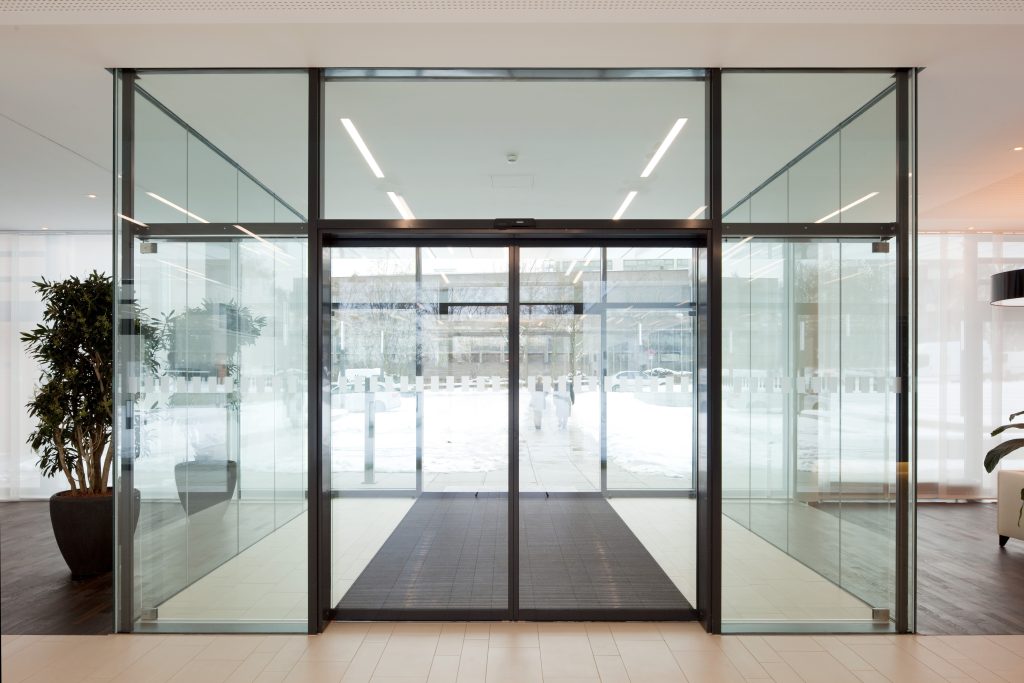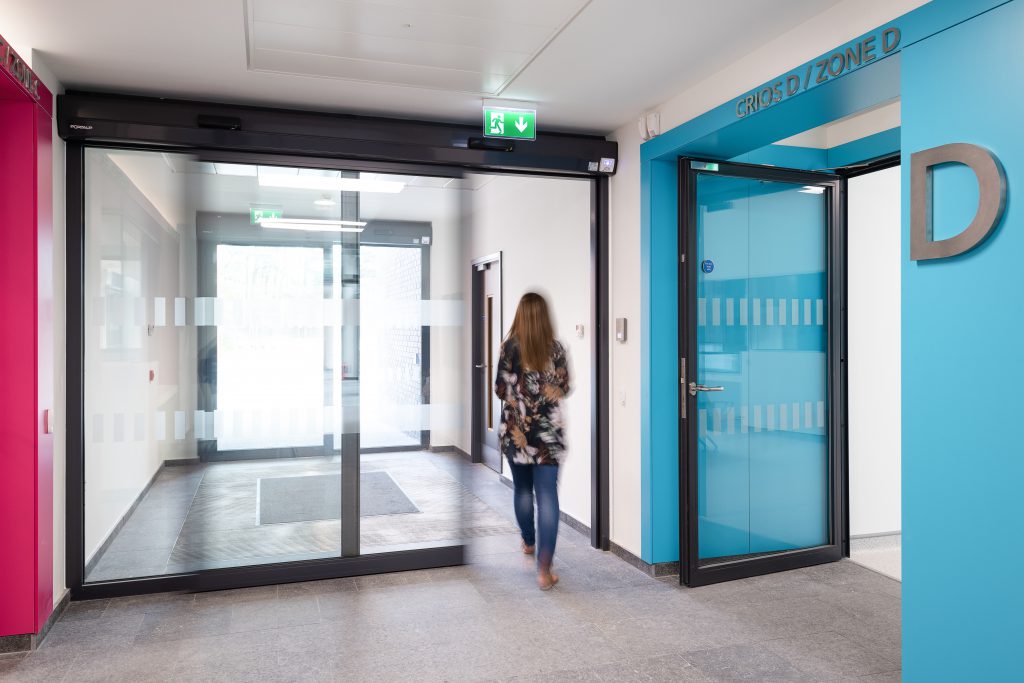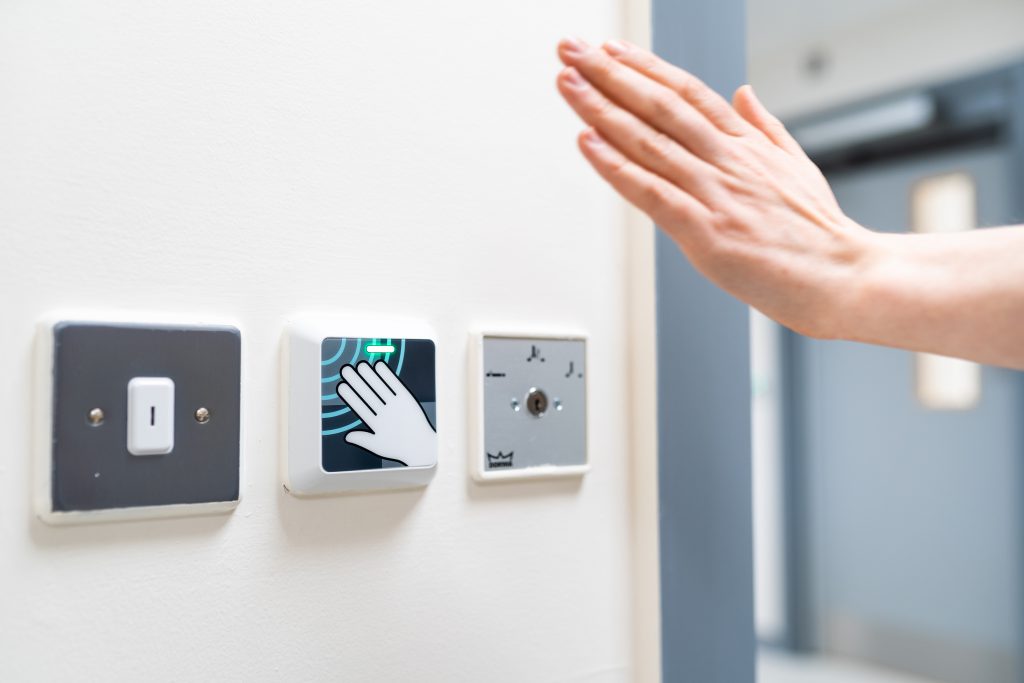
Creating an access strategy for your building
25th May 2021
An interview with Automatics & Access Control Manager for Ireland, Dan Kilpatrick
Whether you are designing a brand-new healthcare facility or planning a refurb on an existing hotel, your access strategy should be at the forefront of the initial planning stage. The purpose of an access strategy is to allow a designer to detail the “how” and the “why” of their access plans in terms of ‘how’ it will function and comply with building regulations, and ‘why’ they are choosing this approach for this project. We asked our Sales Manager for Automatics & Access Control in Ireland, Dan Kilpatrick, to talk us through the process. Dan has worked with architects and designers to create customised, integrated access strategies for projects across all sectors, including healthcare, education, retail, hospitality and commercial, to name a few.
“Each project is looked at individually, we don’t go for a ‘one size fits all’ approach because each clients’ needs are different. For example, if we are working on a hospital build, they are going to have different access requirements to a hotel – in a hospital, they’ll need to restrict access to certain areas such as drug storage areas or intensive care units or a psychiatric ward for example. In a hotel, we look at bedroom locking systems, restricted access to staff areas and how to link it all into the Building Management System (BMS). We work with our clients to create a bespoke access strategy for their project”, says Dan.
Dan details how we analyse the access requirements of a project saying “Part of it comes down to experience, part of it down to compliance with building regulations and requirements and part of it comes down to common sense. We look at the building as a whole – starting with the front of the building – how do you get in, who needs to get in – we move inside the building to the reception area or lobby and again, depending on the building in question, there is going to be access requirements here too. Then we look at the greater building area, ie. different floors, corridors, areas and we identify the individual access requirements for all of these.”
Using a typical healthcare project as an example, Dan explains how we break down the building externally and internally when considering a suitable access and automation strategy.

Externally – The front entrance
“If we take the example of a hospital, there are a few different elements that need to be considered, such as the access needs of those who will be using the entrance. For a hospital you can assume that is a mix of patients, visitors and staff, for example. The front entrance is generally a universal access point, accessed by all of the above so the door should be simple to use and operate efficiently whilst meeting the building standards and the design brief,” Dan advises.
“The security needs of the building also need to be taken into consideration – is there a need for security? Does the door need to function freely 24 hours a day or should access be restricted after visiting hours? We can create timed systems that work around the specific requirements of the building.”
Dan says the level of usage of a buildings’ entrance can vary dramatically – For example, a commercial office development may have busy times of day but in general the footfall going through the entrance is relatively low, whereas in a hospital environment, there could be a steady flow of people entering and exiting the building all day long. “The usage of a main entrance of a hospital is generally going to be extremely high, so the choice of motor needs to be fit for purpose and the access control system needs to work in tangent with the requirements of the door system in question.”
Aesthetics also play a major role in the external access control strategy in terms of the entrance system selected. The main entrance is the first experience people have of a building and needs to set the tone. While this often comes down to the architect or designer’s personal preference or design intent, we work with them to advise on the most aesthetically-pleasing, yet functional solution, whether that be a sliding door system or a revolving door, for example.
“We also need to be aware of the overall energy performance requirements of the building”, Dan tells us. “The façade of the building will have an insulation and energy performance rating and therefore we have to identify the most appropriate front entrance system that will meet the energy performance requirements whilst providing efficient access.”
At KCC Group, we are known within the architectural and construction world for being ‘compliance experts’ in terms of our product range. When designing an access strategy Daniel mentions the need to ensure that the access and automation systems chosen are compliant with both Part M of the building regulations for accessibility and European standard EN16005:2012 for automation.
Another very important element to consider as part of the access strategy is Fire Safety. Does the main entrance need to be an escape door also? Is it part of the smoke evacuation plan for the building? Dan and his team liaise very closely with the project architect and engineer in this regard to ensure the automation or access control systems link into the smoke escape system, meaning they will automatically open if the fire alarm goes off to allow smoke and heat to escape as quickly as possible. Special doors such as security doors require electric locking systems and can be case-specific. Dan’s team would liaise with the Project team and fire consultant to ensure these are fully compliant and fit for purpose.

Internally – access requirements within the building
“Most multiple-occupancy buildings will also require an internal access strategy. We assess each individual door in the same manner, looking at it from the point of view of access needs, security needs, compliance, energy requirements, aesthetics, level of use, type of user and function,” says Dan.
“Picture a hospital corridor – generally there will be double fire doors intermittently along the corridor, and then either single doors off into offices or double doors off into more corridors for example. Those double doors may need to have swing door operation to allow hospital trolleys or equipment to pass through easily and efficiently. These corridor doors might also require a hold-open device to allow for high levels of footfall to pass through but can then be linked to the BMS to automatically close in the event of a fire or even just after certain hours. Part of this can be dictated by Part M of the Building Regulations, but there is also a certain degree of what is convenient to the end user for ease of access,” Dan tells us. “Internal doors may also require an access control system, maybe a fob or swipe card, restricting the flow of traffic in and out of the area to staff or specific personnel. Certain areas will require push-pad automation for wheelchair access. Other areas, such as a drug storage room, might require a restricted access system whereby access can be monitored and recorded by management”, advises Dan.
In healthcare settings where hygiene and infection control are of paramount importance, we also provide hermetically sealed and cleanroom doorsets, designed specifically for healthcare environments, that can be fully automated to allow for hands-free access.
At KCC Group, we are renowned for working with our clients to create bespoke solutions for their project requirements.
“Traditionally we were known as an ironmongery supplier but over the years we have grown the business to provide a vast array of products across several different business units, which has allowed us to provide our clients with ‘solutions’ not just ‘products’,” says Dan.
